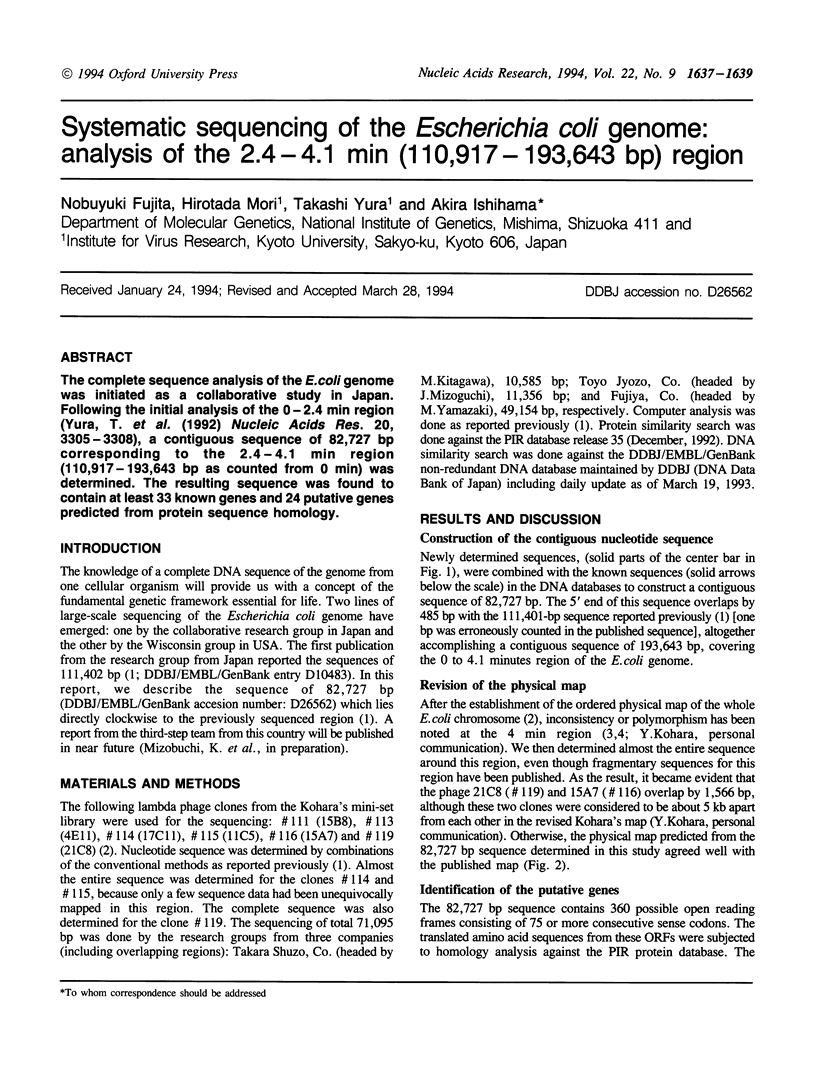Abstract
The complete sequence analysis of the E. coli genome was initiated as a collaborative study in Japan. Following the initial analysis of the 0-2.4 min region (Yura, T. et al. (1992) Nucleic Acids Res. 20, 3305-3308), a contiguous sequence of 82,727 bp corresponding to the 2.4-4.1 min region (110,917-193,643 bp as counted from 0 min) was determined. The resulting sequence was found to contain at least 33 known genes and 24 putative genes predicted from protein sequence homology.
Full text
PDF


Selected References
These references are in PubMed. This may not be the complete list of references from this article.
- Degryse E. Polymorphism in the dgt-dapD-tsf region of Escherichia coli K-12 strains. Gene. 1991 Jun 15;102(1):141–142. doi: 10.1016/0378-1119(91)90554-o. [DOI] [PubMed] [Google Scholar]
- Kohara Y., Akiyama K., Isono K. The physical map of the whole E. coli chromosome: application of a new strategy for rapid analysis and sorting of a large genomic library. Cell. 1987 Jul 31;50(3):495–508. doi: 10.1016/0092-8674(87)90503-4. [DOI] [PubMed] [Google Scholar]
- Yura T., Mori H., Nagai H., Nagata T., Ishihama A., Fujita N., Isono K., Mizobuchi K., Nakata A. Systematic sequencing of the Escherichia coli genome: analysis of the 0-2.4 min region. Nucleic Acids Res. 1992 Jul 11;20(13):3305–3308. doi: 10.1093/nar/20.13.3305. [DOI] [PMC free article] [PubMed] [Google Scholar]
- van Heeswijk W., Kuppinger O., Merrick M., Kahn D. Localization of the glnD gene on a revised map of the 200-kilobase region of the Escherichia coli chromosome. J Bacteriol. 1992 Mar;174(5):1702–1703. doi: 10.1128/jb.174.5.1702-1703.1992. [DOI] [PMC free article] [PubMed] [Google Scholar]


